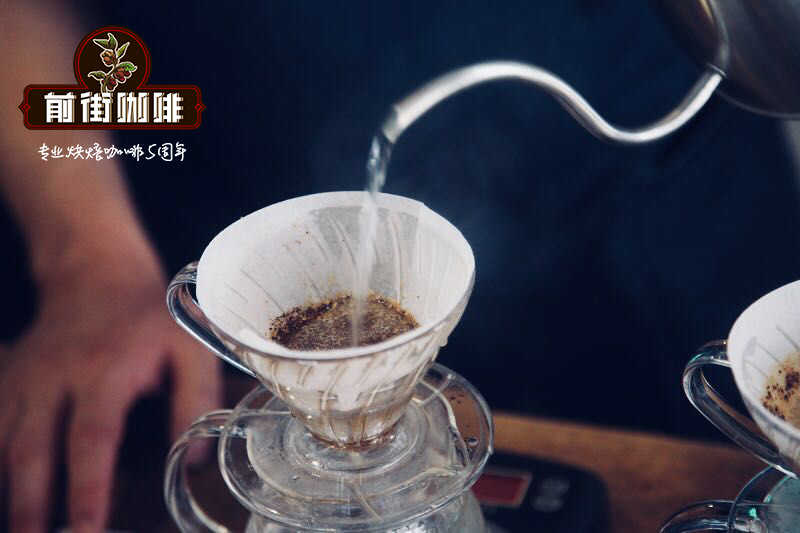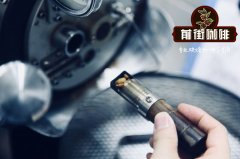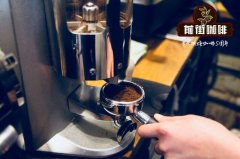How to adjust the parameters of hand-made coffee and how to sweeten a cup of hand-made coffee

I believe that many friends have the habit of making coffee by hand at home, but sometimes they feel that they can't get the taste of a cafe, so they fall into a state of "turning the corner". In this issue, the editor will share the parameters that affect a cup of coffee.
Coffee beans
High-quality coffee beans are the foundation of a good cup of coffee. Generally, the coffee beans used in hand-brewed coffee are single beans, that is, single-origin coffee beans, which can better reflect the unique flavor of the producing area. Good coffee beans are directly reflected in flavor, defect rate and baking freshness. Defective beans will directly affect the overall flavor of coffee, and it is best to choose freshly roasted coffee beans, generally the best taste period of coffee beans is 4-30 days.
Freshly roasted coffee usually takes 4-7 days to grow beans, after which the coffee flavor will be at its best, and then the flavor will slowly decrease.
Second, the degree of grinding
Good coffee must be matched with the right degree of grinding to give full play to its maximum flavor. The most common degree of grinding is compared with granulated sugar, which is indeed comparable. In general, the grindness particle value of hand-brewed coffee is 600-800 microns, which is similar to the thickness of granulated sugar. The finer the grinding, the larger the surface area of coffee in contact with water, the higher the extraction efficiency; the thicker the grinding, the smaller the surface area of coffee in contact with water, the lower the extraction efficiency.
It is recommended to choose the size of granulated sugar as a reference at the beginning, and then fine-tune the grinding degree after brewing and tasting. For example, if the coffee is light, you can fine-tune it slightly.
III. Water quality
More than 98% of a cup of hand-brewed coffee is made up of water, so the water quality directly affects the quality of a cup of coffee. General basic requirements for water quality is TDS:150 mg / L, no chlorine, PH value of 7-8. It is recommended to use filtered purified water or mineral water (you can see the label of mineral water). Generally speaking, the lower the TDS value of water, the more substances it will dissolve.
4. Water temperature
Water temperature will directly affect the extraction efficiency of coffee, the higher the water temperature, the higher the extraction efficiency, and vice versa. According to the editor's observation, the water temperature of 80 ℃-96 ℃ is used. Therefore, it is more meaningful to understand the extraction principle than rote memorization, and the water temperature will change accordingly for beans with different baking degrees.
The coffee beans with medium and shallow roasting degree are dense and not easy to extract, so they can be extracted at a higher temperature (90 ℃-93 ℃). For beans with medium and deep roasting degree, their texture is loose and easy to be extracted, so they can be extracted at a lower water temperature (86 ℃-89 ℃).
5. Water-powder ratio
The change of the ratio of water to coffee powder directly affects the concentration of coffee. At present, the most commonly used ratio of water to powder is 1:15. This is not an absolute, just a reference, personal taste is ever-changing, you can properly adjust your own taste. If you like the rich taste, you can choose 1 13; if you like light, you can adjust it to 1:16.
6. Technique (cooking plan)
There are many kinds or genres of methods (brewing scheme). The conventional brewing method of Qianjie coffee is taken as an example. Qianjie coffee uses three stages of water injection, the first stage is steamed with 2 times the amount of water, the second stage is filled with 6 times the amount of coffee powder, and the last stage is filled with 7 times the amount of coffee powder.
No matter what brewing scheme, its essence is still inseparable from the coffee powder layer of water injection, and how to inject water, the editor thinks that a stable water column will make you get twice the result with half the effort.
Time
The duration of brewing is affected by many factors, such as grinding degree, amount of powder, ratio of powder to water, characteristics of filter cup, manipulation, etc., so it is impossible to give an accurate time, but it usually takes about 1 minute, 30 seconds to 3 minutes to brew a cup of coffee (15-20g powder) (except for special brewing methods such as Japanese brewing).
Summary
The above parameters are inextricably linked and complement each other. The quality and water quality of coffee beans are the most important factors affecting the quality of a cup of coffee.
On the other hand, the degree of grinding, water temperature, water-powder ratio, time and technique complement each other and find a balance among them (belong to their own). This is a cumulative process, and gradually, you will sum up a set of cooking methods of your own.
Important Notice :
前街咖啡 FrontStreet Coffee has moved to new addredd:
FrontStreet Coffee Address: 315,Donghua East Road,GuangZhou
Tel:020 38364473
- Prev

How to get started with Coffee roasting | basic knowledge of Coffee Baking how to roast coffee beans at home
I bet baking is something every barista wants to know! We can develop the flavor by roasting coffee. How can we get the best taste of coffee? What actually happens when you bake? Why is baking important? Coffee beans are seeds that ripen in coffee cherries. They are then processed and dried into coffee beans. Before baking, the coffee beans are green
- Next

Semi-automatic espresso machine purchase guide is the performance of the coffee machine the more expensive the better
Do you want an espresso machine, but you don't know what to do? Are you not sure if you want to buy production or semi-automatic machines? Want to know if your new coffee machine needs stress analysis? Check out this guide for a guide to buying the best machines for your home, coffee shop or business. Factors that you should consider there are many good machines, but effective methods for a person may be
Related
- Beginners will see the "Coffee pull flower" guide!
- What is the difference between ice blog purified milk and ordinary milk coffee?
- Why is the Philippines the largest producer of crops in Liberia?
- For coffee extraction, should the fine powder be retained?
- How does extracted espresso fill pressed powder? How much strength does it take to press the powder?
- How to make jasmine cold extract coffee? Is the jasmine + latte good?
- Will this little toy really make the coffee taste better? How does Lily Drip affect coffee extraction?
- Will the action of slapping the filter cup also affect coffee extraction?
- What's the difference between powder-to-water ratio and powder-to-liquid ratio?
- What is the Ethiopian local species? What does it have to do with Heirloom native species?

